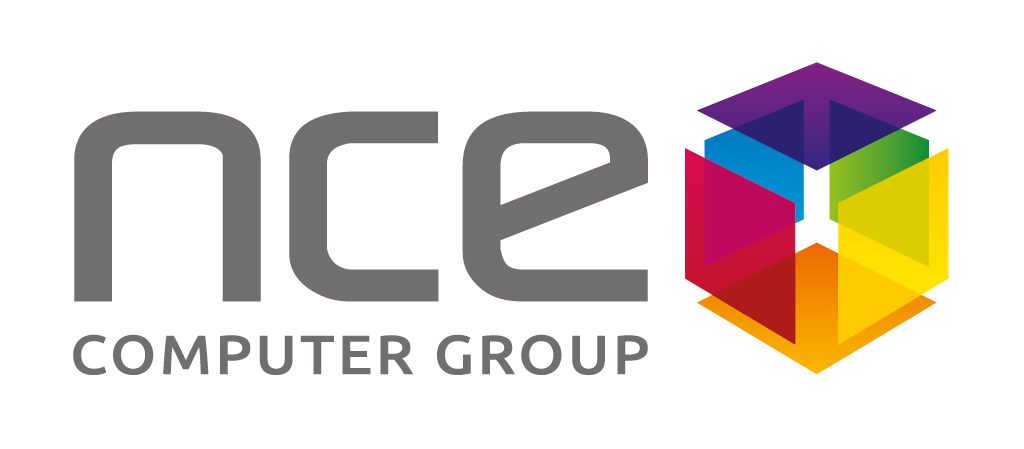Learn more about the impact of the proposed border adjustment taxes on key industry sectors.
The Border Adjustment Tax (BAT) proposal is part of a GOP sponsored tax plan that would see a 20% tax on imported goods and services coming into the US. The BAT is a key revenue component of this GOP plan which would also see corporate income taxes fall from about 35% today to 20%. The BAT is intended to offset the reduction in business income taxes and provide a level playing field for domestic products in the US and international markets.
The BAT has been frequently portrayed as a punitive measure, and the new administration has participated in this rhetoric by suggesting a border tax for imports from Mexico may be a good way to cover the cost of the proposed border wall. This kind of talk has fueled speculation that a border tax is intended to punish our trading partners and those that import products to the US. Since the administration has not yet published a detailed plan for tax reform, we’ll have to wait and see what they actually have in mind. Meanwhile, we can examine the GOP plan more carefully to determine the possible impact on our businesses, assuming that the administration’s plan will have similar components once formally announced.
What Sectors will the BAT strike the hardest?
At first glance, a 20% tax in imported goods and services would seem to be a bad thing for many businesses regardless of the proposed reductions in corporate income taxes. But certain sectors may turn out to be overall winners, including domestic producers like GE, Boeing, and many net exporters. Likely losers would include the foreign producers and importers like Amazon and Walmart. Later in this article we will look in more detail at the business expectations for certain key industry sectors, but first we should examine the pricing effects of these new taxes in the consumer and business markets.
Pricing Effects
Many companies are concerned about their ability to pass on price increases occurring once the tax is in place. They also worry about the margin erosion as companies jockey for position in the new competitive landscape. There are interesting studies that document the expected “forward-shifting” of new taxes into consumer pricing. While most studies conclude that such new costs will eventually end up fully baked into product retail costs, there are well-documented lag times for these pricing effects to occur. One could expect some challenging quarters for their business as they work to adjust, as some may experience under-shifting, failing to achieve price parity, while some enjoy over-shifting, leading to increased gross margins.
These factors will all be a part of the key question- how customers will react to a 20% higher price? Many may decide to alter their buying decisions or put them off all together. At least initially, it could be tough going for companies that are large importers. However there’s more involved than just these changes in corporate taxes, as exchange rates are also expected to be a big factor. This is the so called “currency effect”.
Can the BAT be offset by a rise in the dollar?
A key argument for those in support of the new tax plan is the concept that it could end up being revenue neutral due to a corresponding increase in the value of the dollar. This assumption is based on studies that show a 20% BAT would create a 25% increase in the value of the dollar, acting to balance out the higher cost of imports by making the foreign goods less expensive to purchase in the first place.
While this may be good macro-economic theory, it makes many nervous in the business community as it’s a huge “what-if”. While many economists agree that dollar appreciation would in fact occur, they don’t agree as to the “when” or “how”. The result is we are certainly going into uncharted territory with the monetary impact of a BAT, and it’s impossible to predict the outcome in advance. Business leaders will need to be agile in their responses should the BAT become law.
We could look at the current devaluation of key worldwide currencies since the election of the new administration as leading indicators that the currency effect could occur. Since the election, the peso has seen up to a 12% devaluation vs the dollar, (closer to 6% at the beginning of March). Much of this decline is based on the economic threat of border taxes for Mexican imports. Other key importers to the US have also seen declines, including up to 5% for the South Korean Won (KDW) and 1-2% for the Chinese Yuan (CDY), as the markets have acted to price in the expected threat.
Key Sector by Sector issues to consider
The net effect to US consumption under the new border tax may be mixed as a stronger dollar acts as a hedge against the increased tax. Each US industry sector will see its own unique business implications as managers work the problems and opportunities that result. Here’s a look at several key industry sectors:
Healthcare
Many bio and medical technology providers are dependent upon offshore manufacturing in China, Singapore, Mexico and other areas. Some of these industry leaders, such as Amgen, are also structured in a way that will increase their overall tax rate as a consequence of the proposed tax changes. Therefore, large healthcare bio-technology and medical device manufacturers in general are expected to be highly impacted by the proposed tax changes. However, it’s important to note that there is a vibrant base of over 6500 small and medium sized medical device manufacturers in the US, many of which produce their product domestically. These companies could benefit from these same changes. Some may be targets of acquisitions. On this note, many of the big pharma producers like Amgen are expected to benefit from the repatriation opportunity in the proposed tax plan-allowing them to bring back cash from offshore. This may lead to a wave of acquisitions among domestic drug research and smaller drug producers and device manufacturers in the US. Such mid-size firms may benefit from preparing for acquisition talks from these large suitors.
Retail and Consumer Electronics
This sector has been receiving the most publicity, as it’s clearly one of the most impacted segments as most revenues involve foreign manufactured products. Apparel is a poster child for this category, as Michael Kors for example produces over 97% of their products in Asia and Europe, and Nike produces 94% of their footwear in Asia. Leading retailers like Amazon, Target, and Walmart are obviously preparing to deal with pricing pressures as they are the middleman for these foreign produced goods being taxed. On the consumer electronics side, Apple, Panasonic, and Microsoft are but a few of the industry leaders which are well known to produce a large majority of their products offshore.
These apparel, retailers, and consumer electronics producers will undoubtedly be looking for the currency effect to soften the blow of increased border taxes. They may also look to the pricing effect as an opportunity to gain market share from weaker rivals. Due to the various issues of manufacturing these goods, it’s doubtful the tax changes would see production shift back to the US in a meaningful way. One may expect that the status quo will remain in these sectors due to the complexity of the infrastructure currently in place and the offset of the currency effect. Servicing these products could be an exception however, as the border tax will preclude any repair or remanufacturing from being done at offshore facilities, (typically many of these products return to the manufacturer for repair), as the border tax may apply to this post repair material.
Automotive
This is another very well-known example, as the new administration has already publically used this segment as a way to sell the goal of “America First”, and has been pushing auto manufacturer’s to migrate more production to the US. A more interesting segment in Automotive to examine would be the auto parts market, which includes both Original Equipment (OE), and aftermarket parts components. In 2015, the US exported over $30B in parts to Mexico and about the same amount to Canada. So there is a large auto parts manufacturing presence in the US that will stand to benefit from the tax changes as they are already net exporters. It’s important to note the there are many small to medium enterprises (SME’s) in the domestic auto parts industry that will be among the beneficiaries. These SME’s may wish to pursue foreign sales opportunities more aggressively should the tax changes occur, as they will not be taxed on export revenues. Conversely, some large manufacturers in this segment may be at a disadvantage as they have setup in Mexico and other countries, and could see increased costs due to currency effects and pricing pressure from US competitors. Another big factor to watch in this industry will be the potential changes to NAFTA, as much of the trade takes place among the US, Canada, and Mexico.
Information Technology
There’s a huge range of changes impacting technology firms due to the diversity of this category. Media oriented technology firms such as Facebook, and software companies like Oracle or Salesforce are examples of firms that stand to benefit greatly, due to tax benefits such as the opportunity to repatriate offshore earnings. These companies also have large foreign revenue streams that will no longer be subject to taxation. Hardware based companies are more of a mixed bag, as those who currently have a domestic manufacturing base will do better than those who do not. Cisco and Intel for example have more domestic production than other tech firms and could benefit, whereas Apple, Samsung, LG, and others are examples of those who may need to look to shift certain production assets to take advantage of the new tax environment. We’ll be looking more carefully at segments within the Technology field in future articles.
Improving the Value Chain as part of tax reform
As supply chain professionals begin to plan in order to take advantage of changes in the tax laws, the overall theme will likely be one of shortening the value chain. One can look at the new environment and use this as an opportunity to use creative solutions to gain competitive advantage. Over the past 25 years of so since NAFTA was approved and the offshoring model in general gained traction among US companies, the value chain has become more complex and time consuming due to the economics of producing and repairing products offshore. As we look at domestic opportunities again due to the pending tax changes, we can potentially rebuild our value chains in a more responsive and agile fashion. Can we find ways to bring partners together in our value chain to remove touches and transport steps? Can we get downstream providers to integrate each other’s products and data to remove steps from my process? Can I take myself out of the service equation for my product and allow my suppliers to provide this directly? How could I leverage small batch manufacturing or similar concepts to improve my product selection while leveraging local producers? These are the kind of questions we can ponder while deciding on our reactions to the new tax environment. The real winners will find ways to exploit the tax changes in a way that provides competitive advantage.
Pete Paisley is the Vice President of Supply Chain Onshoring Services for NCE Computer Group Inc., based in El Cajon, CA. NCE Computer Group is a leading provider of outsourced technical services to OEM’s including field services, screen/test/repair, and customer support. You can reach Pete at 619-212-3026, or paisleyp@ncegroup.com.

